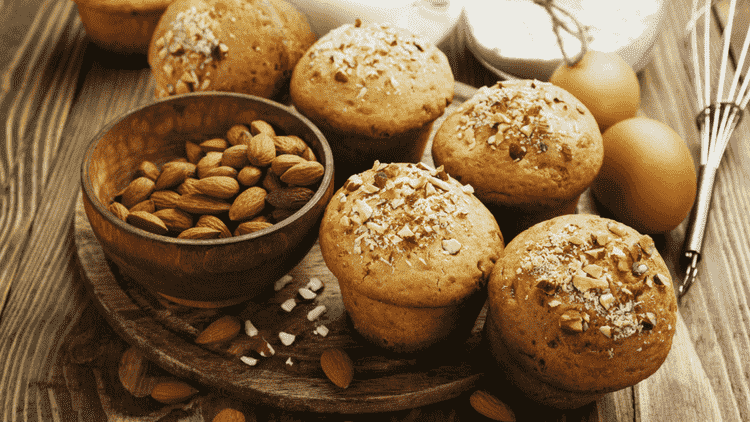When you think of great sources of iron, chances are you think of red meat, so it might surprise you to know that there are dozens of other great sources of iron. For starters, you’ve got white meats and fish; then you’ve got dried fruit like raisins and apricots, plus various beans and lentils. This article, though, is going to focus on five of the most iron-rich greens on the planet. We’ll also be looking at why iron is so essential to your diet.
First things first: Why do we need iron?
Iron is an essential mineral as it assists with transporting oxygen around our bodies. Basically, iron is a component of haemoglobin, which is the part of your red blood cells that carries oxygen. If you don’t have enough iron, your body can’t produce enough haemoglobin. If you don’t have enough haemoglobin, you’ll struggle to transport oxygen around your body.
Doctors call this condition iron deficiency anaemia, and patients usually present with symptoms such as extremely low energy levels, day-to-day exhaustion, and a lowered ability to fight off illness or infection.
Want to exercise regularly or hit the gym? Good luck doing so if you’re deficient in iron!
Here’s the list
So, which iron-rich foods should you eat to help you avoid falling victim to that condition?
So, which iron-rich foods should you eat to help you avoid falling victim to that condition?
1. Spinach – 2.71mg per 100g
Taking my number one top spot for iron-rich greens is spinach, with a total of 2.71mg of iron per 100g. Not only is spinach rich in iron, but it’s super cheap and easy to cook, and it goes with pretty much anything.
The stems can have a slightly more bitter flavor than the leaves. I actually like this taste, but if it’s not your thing, you can cut the stems off and still enjoy plenty of the benefits of spinach.
2. Swiss chard – 1.8mg per 100g
Swiss chard has large, tender, and fleshy leaves as well as thick, crispy stalks. Personally, I think it has a slightly more bitter flavor than spinach.
Interestingly, “Swiss” chard is a Mediterranean vegetable, and isn’t native to or even grown in Switzerland! It has been suggested that that the name arose because it was first described by Swiss botanist Gaspard Bauhin.
3. Kale – 1.5mg per 100g
If you don’t mind seeming a bit hipster, kale is my third choice for iron-rich greens. There are actually two varieties, smooth and crinkly-leaved kale, though the crinkly variety is by far the most common. Kale has a stronger flavor than spinach and an earthier flavor than cabbage.
4. Pak choi – 0.8mg per 100g
Also known as bak choi, this Chinese cabbage has smooth leaf-blades, and literally translates as “white vegetable.” It is most commonly found in southern China and south-east Asia, and is popular largely because it’s winter-hardy. Described as “squat” or “short celery” in appearance, its flavor is like a cross between spinach and a mild cabbage.
5. Collard greens – 0.5mg per 100g
As well as being high in iron, collard greens are also packed full of calcium and vitamins A and C (which is really helpful for iron absorption).
The plant has large dark-coloured leaves and is found in warm parts of the world, including Portugal, Brazil, the southern United States, large parts of Africa, and northern India. In Tanzania and Kenya, collard greens are generally used as part of a meal called sukuma wiki, which involves lightly sautéed greens plus onions and salt.
Interesting fact for you: “Collard” is actually a corrupted form of the word “colewort,” which is a wild cabbage plant.
Cooked or uncooked?
You might have heard that vegetables are better for you when eaten raw. However, whilst this might be true for some vegetables, it certainly isn’t the case for greens.
Almost all greens are much better for you when eaten cooked. This is because the iron, as well as other minerals, is often bound to other compounds within the greens. The heat involved in cooking breaks down these bonds, freeing up more minerals for you to eat.
To give you an example, 100g of raw spinach gives us 2.71g of iron, but if we cook that exact same amount of spinach it will give us 3.57g of iron! Pretty sneaky, eh?
If you do want to cook your vegetables, it’s best to do so by stir-frying or steaming. Try to avoid boiling as the greens will lose a lot of their minerals to the water.
Improve absorption of iron
It’s important to remember that the total content of iron in your food isn’t the be-all and end-all. You’ve also got to consider your ability to absorb that iron. If you want to improve your body’s ability to absorb iron, try to eat your iron-rich foods with a good source of vitamin C, for example, broccoli, orange juice, or strawberries.
You should also try to avoid drinking tea or coffee at the same time as you eat, as studies have shown that these can reduce your body’s ability to absorb iron.
Time to iron out the kinks in your diet
Alright, so, terrible puns aside, you now know five different types of green leafy vegetables that you can eat to top up your iron stores. If you paid attention at the start, you’ll also know how important iron is for your body.
If you want to maximize your energy and improve your body’s ability to transport oxygen to your muscles, it’s time to start eating your greens!
Which green vegetable is your favorite?






